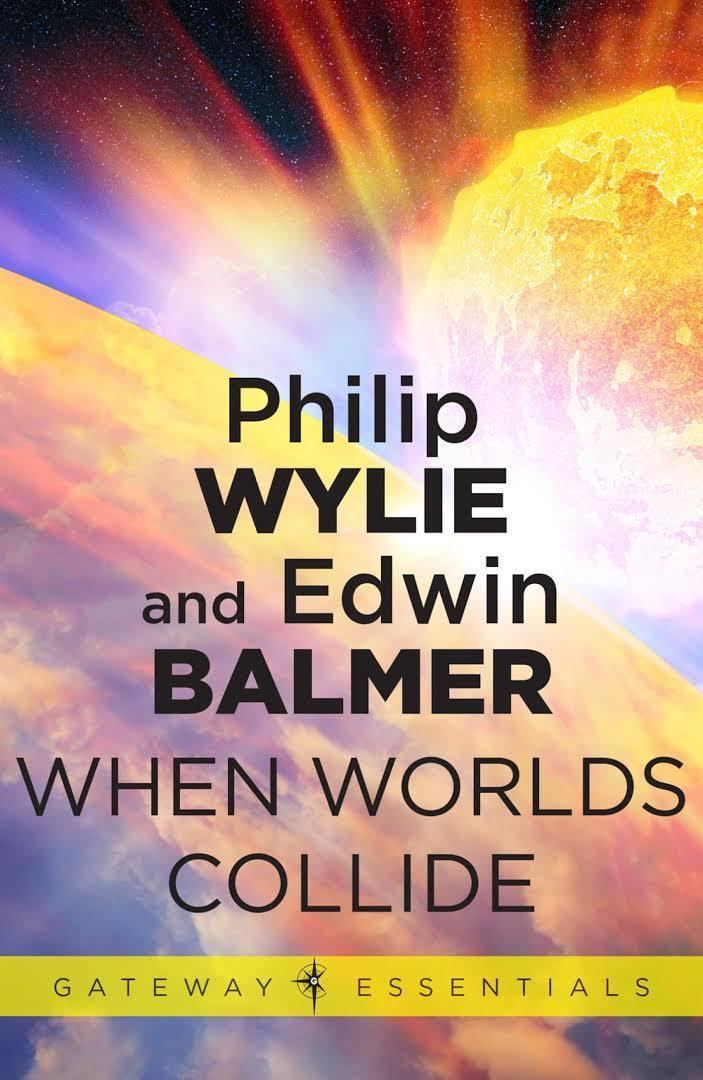7.8 /10 1 Votes7.8
3.9/5 Audible Pages 344 pp Followed by After Worlds Collide | 3.9/5 Goodreads Language English Originally published 1933 Country United States of America | |||||||||||||||||||||||||||||||||
 | ||||||||||||||||||||||||||||||||||
Media type Print (hardback & paperback) Genres Novel, Science Fiction, Speculative fiction Adaptations When Worlds Collide (1951), When Worlds Collide (2012) Similar Philip Wylie books, Science Fiction books, Classical Studies books | ||||||||||||||||||||||||||||||||||
When worlds collide don t worry be ready for nibiru
When Worlds Collide is a 1933 science fiction novel co-written by Philip Wylie and Edwin Balmer; they both also co-authored the sequel After Worlds Collide (1934). It was first published as a six-part monthly serial (September 1932 through February 1933) in Blue Book magazine, illustrated by Joseph Franké.
Contents
- When worlds collide don t worry be ready for nibiru
- When worlds collide 1933
- Synopsis
- Adaptations and influences
- References
When worlds collide 1933
Synopsis
Sven Bronson, a South African astronomer, discovers that a pair of rogue planets, Bronson Alpha and Bronson Beta, will soon enter the solar system. In eight months, they will pass close enough to cause catastrophic damage. Sixteen months later, after swinging around the Sun, Bronson Alpha will return to pulverize the Earth and leave. It is hoped that Bronson Beta will remain and assume a stable orbit.
Scientists led by Cole Hendron work desperately to build an atomic rocket to transport enough people, animals and equipment to Bronson Beta in an attempt to save the human race. Various countries attempt the same thing. Nations including the United States evacuate their coastal regions in preparation for the Bronson bodies' first pass. As the planets approach, observers see through their telescopes what everyone agrees are cities on Bronson Beta. Tidal waves sweep inland at a height of 750 feet (230 m), volcanic eruptions and earthquakes take their deadly toll, and the weather runs wild for more than two days. As a token of things to come, Bronson Alpha grazes and destroys the Moon.
Three men take a floatplane to check out conditions across the United States and meet with the President. All three are wounded fighting off a mob at their last stop, but manage to return with a precious sample of extremely heat-resistant metal one of them had noticed, solving the last remaining engineering obstacle: No material had been found to make rocket tubes capable of withstanding the heat of the atomic exhaust for very long.
Five months before the end, desperate mobs attack the camp, killing over half of Hendron's people before they are defeated. With the rocket tube breakthrough, the survivors are able to build a second, larger ship that can carry everyone left alive (originally there was room for only 100 of the roughly thousand people Hendron had recruited). The two American ships take off, but lose contact with each other. Other ships are seen launching from Europe; the French ship's tubes melt, causing it to crash. The original American ship makes a successful landing, but it is unknown if anyone else made it. The survivors find that Beta is habitable.
The sequel, After Worlds Collide, details the fate of the survivors on Bronson Beta.
Adaptations and influences
When Worlds Collide had far-reaching influences on the science fiction genre. The themes of an approaching planet threatening the Earth, and an athletic hero, his girlfriend, and a scientist traveling to the new planet by rocket, were used by writer Alex Raymond in his 1934 comic strip Flash Gordon. Jack Williamson's 1934 short story "Born of the Sun" also used the concept of a scientist and his fiancee escaping the destruction of the Earth in a hurriedly constructed "ark of space". The 1940–41 newspaper comic strip Speed Spaulding, an adaptation credited to the novel's authors, was more directly based on the novel. The themes of escape from a doomed planet to a habitable one also can be seen in Jerry Siegel and Joe Shuster's 1938 comic Superman.
The novel was also adapted as the 1951 film When Worlds Collide, produced by George Pal and directed by Rudolph Maté. Another film adaptation of When Worlds Collide was in pre-production as of 2012.
In 2012, the British composer Nigel Clarke wrote a large-scale work for brass band inspired by the film and likewise titled When Worlds Collide.
